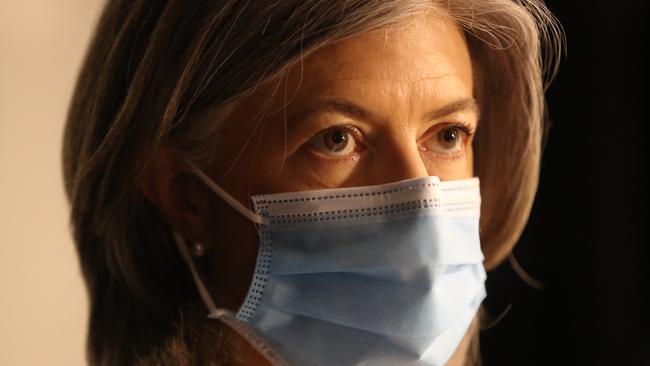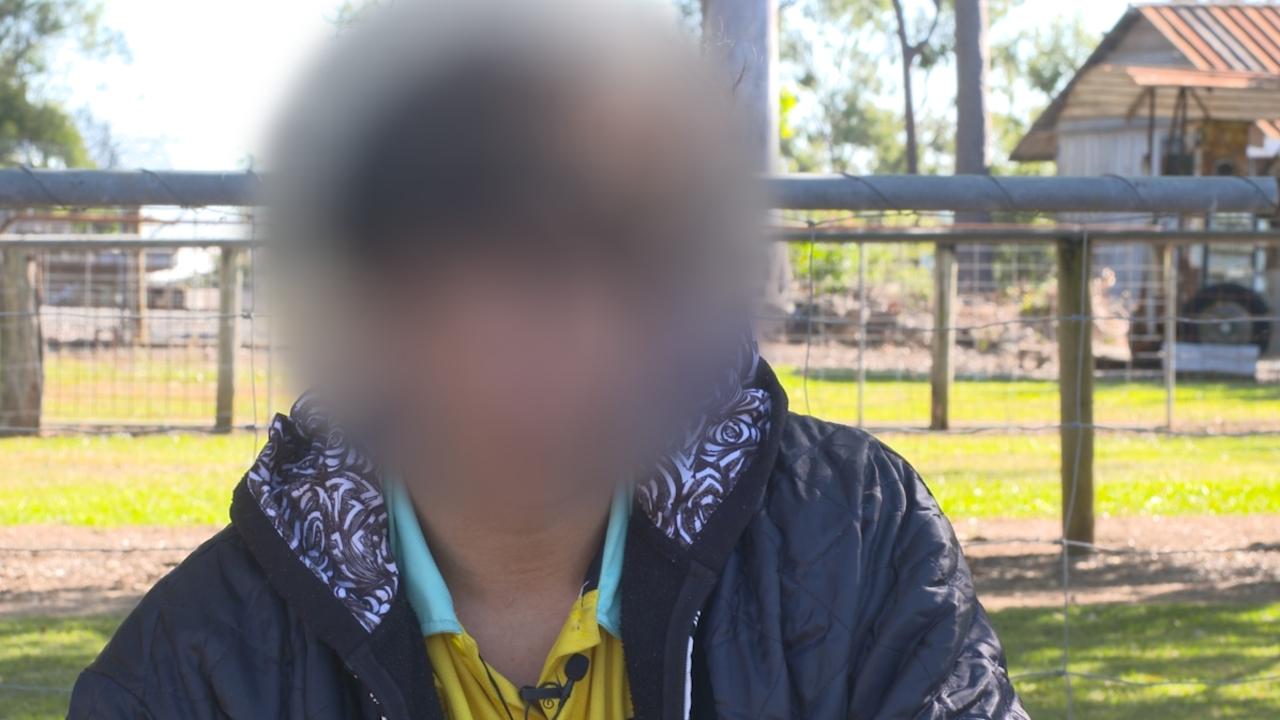Wearing a mask in South Australia: All your questions answered
Wearing a mask is now mandatory for many, including in all indoor public spaces and on public transport. So how do you put them on? How many layers should my cloth mask be? We answer all your mask questions.
Coronavirus
Don't miss out on the headlines from Coronavirus. Followed categories will be added to My News.
Wearing a mask is now mandatory for High school students and teachers, health care workers, people working in beauty services, in indoor public spaces and on public transport.o And while it's not mandatory to wear outside our chief public health officer Nicola Spurrier says: "If you can wear a mask, wear a mask.” So how do you wear them effectively? How many times can you use a cloth mask? And when should you dispose of it? We’ve got all your mask questions answered.
WHY SHOULD I WEAR A MASK?
Face masks are a physical barrier to help to stop the spread of COVID-19. As SA’s chief public health officer Nicola Spurrier says, South Australians should get used to wearing masks for the foreseeable future. "It can be a disposable one or one of the cloth masks are absolutely fine as well because that means if and when we have another case we will be able to do a risk assessment and work out who needs to go into quarantine but also it has the potential to cut off that ongoing chain of transmission," Professor Spurrier said.
“It not only protects you but it protects the whole community”
In addition, she reiterated:
■Get tested if you have any symptoms, no matter how mild.
■Practice physical distancing (keep 1.5 metres between yourself and others wherever and whenever possible).
■Wash (or sanitise) your hands regularly.
■Wipe down frequently touched surfaces.
■Cover coughs and sneezes in a tissue or elbow.
■Stay at home and avoid others when sick.

Who needs to wear a mask? Masks are now mandatory on public transport and at indoor public venues. You should wear a mask while walking outside if cannot physically distance from other people. Masks are not required if you are walking alone or are with other members of your household. Masks are not required while conducting vigorous physical exercise, provided you can physically distance from other people. People attending health care, residential care, disability support or aged-care services must wear a mask that covers the nose and mouth at all times when in the physical presence of other people on the premises. This includes care providers, patients, clients, residents, administration and other staff, employees, visitors, students, contractors and any other person on the site. High school students and their teachers must also wear masks. SA Health is asking everyone else to put on a mask if you go out in public.
CLEVER MASK HACKS: FIGHT THE FOG, GET THOSE STRAPS AWAY FROM YOUR EARS, PREVENT LIPSTICK TRANSFER
WHO SHOULD NOT WEAR A MASK?
Masks should not be worn by children under the age of two or anyone with trouble breathing, who is unconscious, incapacitated or otherwise unable to remove the mask without help. Children under the age of 12 are not required to wear a mask because they may not be able to handle it properly.
WHAT MAKES AN EFFECTIVE FACE MASK?
Cloth masks should be made of three layers of a mix of breathable fabrics, to ensure adequate protection.
Cloth masks are inexpensive and easy to make.
You can also use single-use disposable surgical masks.
Both are available from a number of retail outlets.
Make sure that your mask does not have holes or a valve. This can result in breathing out the virus if you have COVID-19.
Make sure your mask is not wet, or it can no longer do its job.
If you are yet to buy a mask, ‘fitted’ face coverings, such as bandannas, scarfs, or neck gaiters may be used until you can buy a mask.
HOW DO I FIT MY MASK CORRECTLY?
A mask should fit securely around your face, covering both your nose and mouth areas at all times.
Make sure the mask fits snugly under your chin, over the bridge of your nose and against the sides of your face.
It should be snug and secured with ties at the back of your head, or by ear loops.
HOW DO I PUT MY MASK ON SAFELY?
Before putting the mask on, wash your hands for at least 20 seconds with soap and water, or use hand sanitiser that is made up of over 60 per cent alcohol.
Avoid touching your eyes, nose, mouth at all times.
Do not touch the front of your mask while wearing it.
If you do touch the mask, wash or sanitise your hands immediately.
Do not allow the mask to hang around your neck, this includes when eating and drinking.
Do not allow the mask to sit under your nose.
When you take off your mask, use the ties or ear loops – do not touch the front of your mask.
Store cloth face masks in a plastic bag until you have an opportunity to wash them.
Single-use masks should not be re-used, and should be thrown away.
Wash your hands for at least 20 seconds with soap and water, or use hand sanitiser that is made up of over 60 per cent alcohol once you remove the mask.
Do not dispose of masks into a recycling bin. Dispose in a bag or lined bin.
HOW SHOULD I WASH MY CLOTH MASK AND HOW OFTEN?
You should wash your mask after each use, and you can wash it in a washing machine or by hand.
If using a washing machine, don’t be afraid to wash your mask along with your regular laundry — with standard laundry detergent and the warmest water the cloth material of your mask can handle.
If you’re washing by hand, soak your cloth mask and then rinse thoroughly with water.
You’ll want to be sure your mask dries completely after being washed.
These questions were answered with information from the SA Health website. This guide was first published in November 202 and was updated August 2021.


